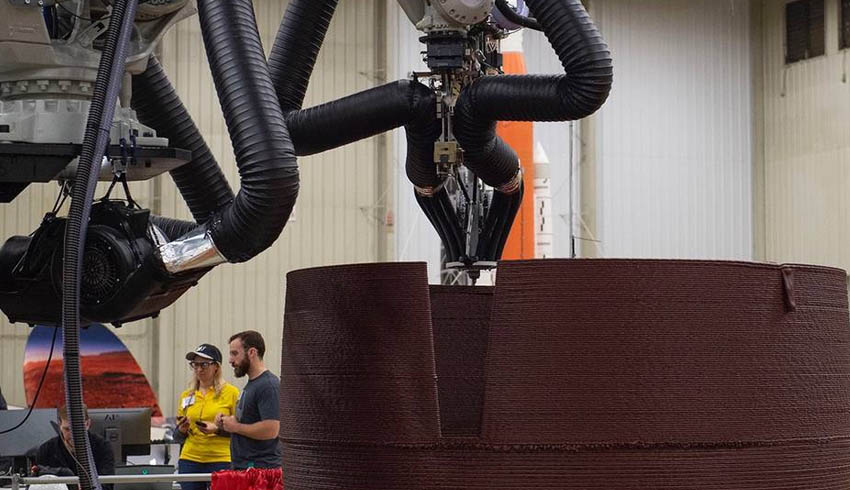NASA has entered into 20 partnerships with 17 US companies, which have been tasked with developing new technologies for its Artemis lunar exploration program, including an advanced 3D printing system, a testing method for removing dust from planetary solar arrays, and maturing a first-stage rocket recovery system for a small satellite launch provider.
The companies selected for the program include:
- Aerojet Rocketdyne Inc of Redmond, Washington
- Ahmic Aerospace LLC of Oakwood, Ohio
- AI SpaceFactory Inc of Secaucus, New Jersey
- Blue Origin LLC of Kent, Washington
- Box Elder Innovations LLC of Corinne, Utah
- Cornerstone Research Group Inc of Miamisburg, Ohio
- Elementum 3D Inc of Erie, Colorado
- Gloyer-Taylor Laboratories LLC of Tullahoma, Tennessee
- IN Space LLC of West Lafayette, Indiana
- Orbital Sciences Corp (Northrop Grumman Space Systems Inc) of Dulles, Virginia
- pH Matter LLC of Columbus, Ohio
- Phase Four Inc of El Segundo, California
- Rocket Lab USA Inc of Long Beach, California
- Sensuron LLC of Austin, Texas
- Space Exploration Technologies Corp (SpaceX) of Hawthorne, California
- Space Systems Loral Inc (Maxar Technologies) of Palo Alto, California
- Stellar Exploration Inc of San Luis Obispo, California
Among the technologies to be developed is a new material built by AI SpaceFactory that mimics lunar regolith, or dirt.
The firm will leverage 3D printing technology to develop a test structure in a vacuum chamber that mimics environmental conditions on the moon.
Meanwhile, SpaceX is set to partner with NASA’s Langley Research Center in Hampton, Virginia, to capture imagery and thermal measurements of its Starship vehicle during orbital re-entry over the Pacific Ocean.
The data is expected to be used to advance a reusable thermal protection system, which protects the vehicle from aerodynamic heating for missions returning from low-Earth orbit, the moon and Mars.
Ahmic Aerospace has also been tasked with maturing new thermal protection systems by partnering with NASA’s Ames Research Center in California’s Silicon Valley, collecting data about how materials behave under ablative conditions.
“Space technology development doesn’t happen in a vacuum,” Jim Reuter, the associate administrator for NASA’s Space Technology Mission Directorate, said.
“Whether companies are pursuing space ventures of their own or maturing cutting-edge systems to one day offer a new service to NASA, the agency is dedicated to helping bring new capabilities to market for our mutual benefit.”
NASA noted that the selections will result in unfunded Space Act Agreements between the companies and agency.
The period of performance is to be negotiated for each agreement, with an expected duration of between 12 and 24 months.
The total estimated value of NASA resources to support the agreements is approximately US$15.5 million.
[Related: NASA issues call for support to promote Artemis missions]

